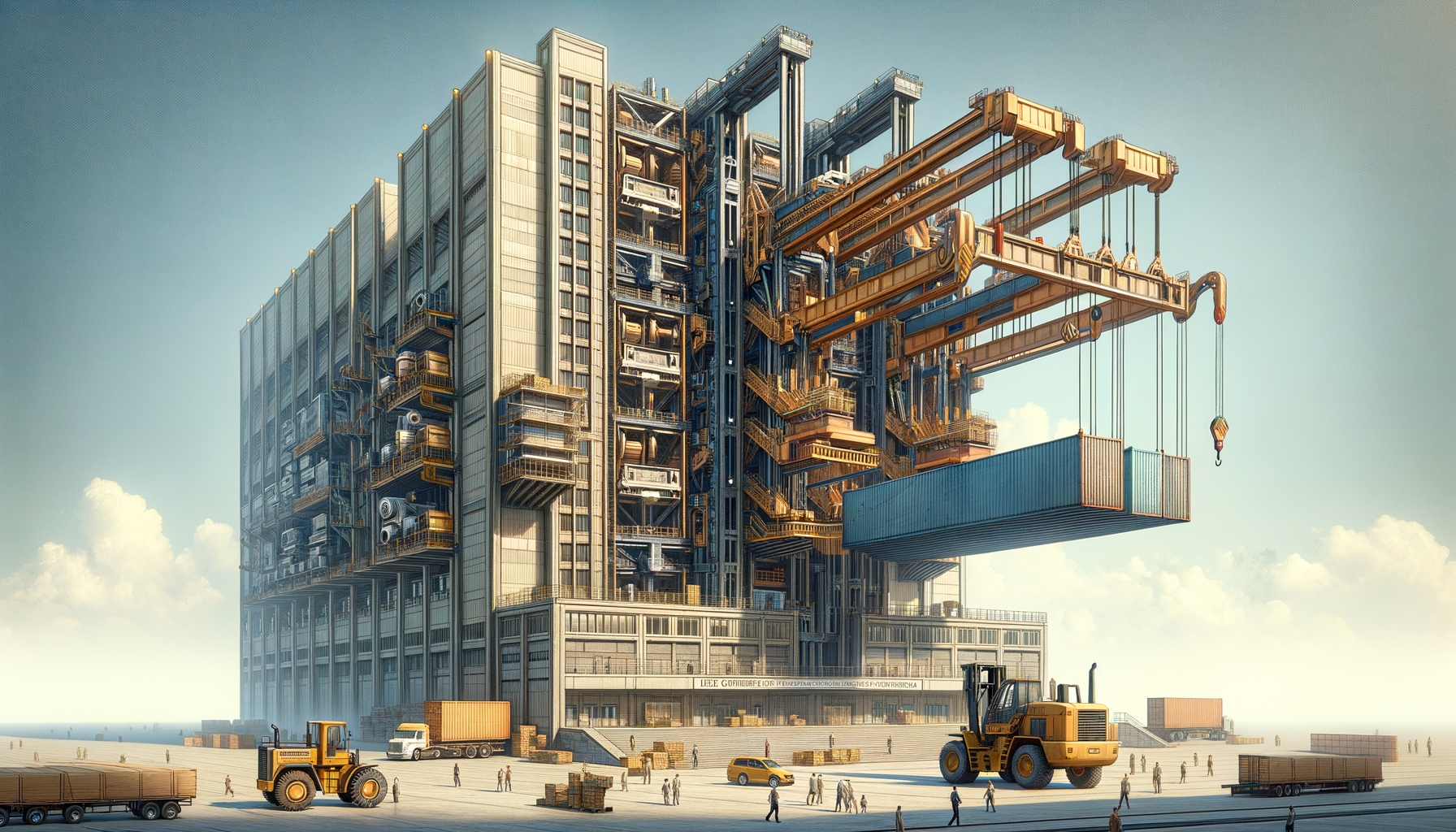
Mastering the Move: Heavy Machinery and Commercial Relocations
The Complexity of Heavy Machinery Moving
Moving heavy machinery is not just about lifting and transporting; it involves a complex process that requires meticulous planning and execution. These machines often weigh several tons and are integral to industrial operations, making their safe relocation crucial. The process begins with a thorough assessment of the machinery’s dimensions, weight, and structural integrity. This is followed by a detailed route planning to ensure that the path is free from obstacles and can support the equipment’s weight.
Heavy machinery movers employ specialized equipment such as cranes, forklifts, and hydraulic jacks to lift and secure the machinery. Safety is paramount, so these professionals are trained to follow strict protocols to prevent accidents. For instance, they use rigging techniques to stabilize the load and prevent it from shifting during transit. Moreover, they often work with engineers to disassemble and reassemble machinery when necessary, ensuring that it remains functional after the move.
The complexity is further compounded by external factors such as weather conditions and regulatory requirements. Movers must navigate legal constraints, including obtaining permits for oversized loads and adhering to transportation regulations. In summary, moving heavy machinery is a multifaceted task that demands expertise, precision, and adherence to safety standards.
Commercial Movers: Beyond the Basics
Commercial moving encompasses a wide array of services beyond the simple act of transportation. It involves relocating entire businesses, which can include office furniture, electronics, and sensitive documents. The goal is to minimize downtime and ensure a seamless transition to the new location. Commercial movers offer comprehensive services that include packing, loading, transportation, unloading, and even setting up the new space.
A key aspect of commercial moving is the customization of services to meet specific business needs. For example, some businesses require after-hours moves to avoid disrupting operations, while others may need temporary storage solutions. Commercial movers are equipped to handle these varied requirements with flexibility and professionalism.
Another critical component is the handling of sensitive materials. Commercial movers are trained to manage confidential documents and ensure their security during transit. They use secure packing methods and tracking systems to safeguard these assets. Additionally, they often provide insurance options to protect against potential losses or damages. Overall, commercial movers play a vital role in facilitating business continuity during relocations.
Choosing the Right Moving Partner
Selecting the right moving partner is essential for a successful relocation, whether for heavy machinery or commercial purposes. The first step is to research and compare different moving companies, focusing on their experience, expertise, and customer reviews. It’s important to choose a mover with a proven track record in handling similar types of relocations.
Another consideration is the range of services offered. A full-service mover can provide a comprehensive solution that covers every aspect of the move, from packing and transportation to setup and installation. This can be particularly beneficial for businesses that lack the resources to manage the move internally.
Cost is also a significant factor, but it’s crucial to look beyond the initial quote. A reputable mover will provide a detailed estimate that includes all potential charges, such as labor, equipment rental, and insurance. Transparency in pricing helps avoid unexpected costs and ensures that the move stays within budget.
Finally, communication is key. A reliable mover will maintain open lines of communication throughout the process, providing updates and addressing any concerns promptly. This ensures that the relocation is executed smoothly and efficiently.
Technology and Innovation in Moving Solutions
Technology plays a pivotal role in modern moving solutions, enhancing efficiency and safety. Heavy machinery movers utilize advanced equipment like GPS tracking systems and automated lifting devices to streamline the moving process. These technologies provide real-time data on the machinery’s location and condition, allowing movers to make informed decisions and respond quickly to any issues.
In the commercial moving sector, technology facilitates better planning and execution. For instance, inventory management software helps movers keep track of all items being relocated, reducing the risk of loss or damage. Additionally, virtual surveys and 3D modeling allow movers to assess the new location and plan the layout before the move, ensuring a smooth setup.
Innovation also extends to eco-friendly practices. Many moving companies are adopting sustainable methods, such as using reusable packing materials and optimizing routes to reduce fuel consumption. These initiatives not only benefit the environment but also appeal to businesses looking to enhance their corporate social responsibility.
Overall, technology and innovation are transforming the moving industry, making it more efficient, reliable, and environmentally conscious.
Preparing for a Successful Move
Preparation is key to a successful move, whether you’re relocating heavy machinery or an entire business. The process begins with a detailed plan that outlines every step of the move, from packing to transportation to setup. This plan should include a timeline, budget, and list of responsibilities to ensure that everyone involved is on the same page.
For heavy machinery moves, preparation involves conducting a thorough assessment of the equipment and the route. This includes checking the machinery’s condition, securing the necessary permits, and ensuring that the path is clear and capable of supporting the load. It’s also important to coordinate with engineers and technicians to handle any disassembly or reassembly required.
Commercial moves require similar attention to detail. Businesses should conduct an inventory of all items being moved and decide what to keep, donate, or discard. It’s also crucial to communicate with employees about the move and provide them with clear instructions on their roles and responsibilities.
Finally, it’s essential to work closely with the chosen moving partner to address any concerns and make adjustments as needed. By taking a proactive approach and preparing thoroughly, businesses can ensure a smooth and successful relocation.


